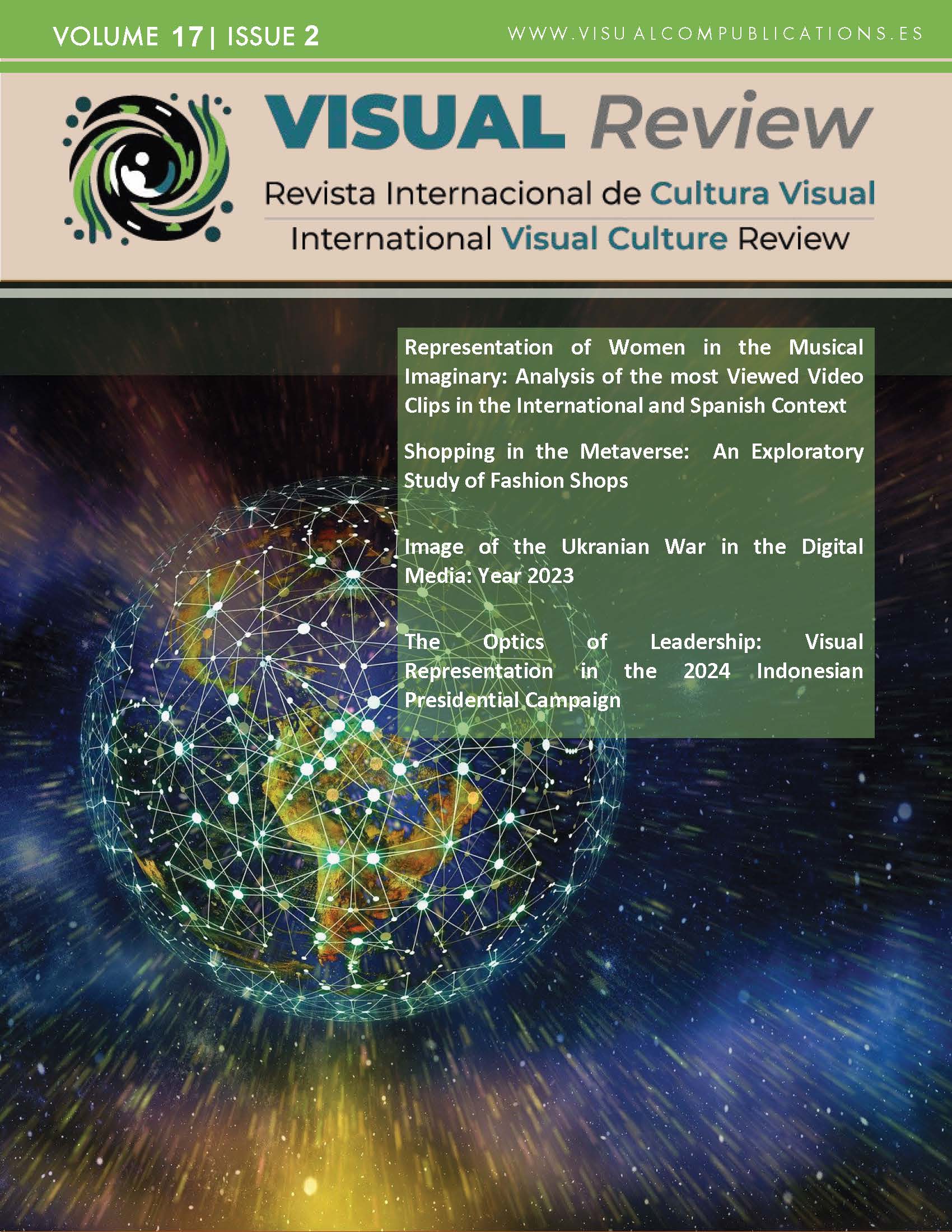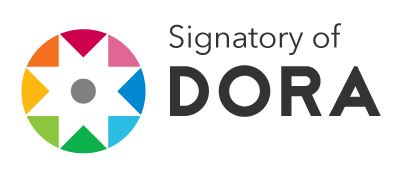Visual Narratives on TikTok
Analysis of the Impact on Engagement Based on the Tone of Scientific News Published by Media in Spain and Chile
DOI:
https://doi.org/10.62161/revvisual.v17.5757Keywords:
Interactions, TikTok, Social media, Journalism, Science, News ApproachAbstract
This study focuses on analysing how four television media in Spain and Chile have adopted TikTok as a tool to disseminate scientific content. Through an analysis of the publications made in 2023, the visual narratives used are explored, classifying the publications according to their tone and style, and thus relating public interaction to the type of message. The results obtained preliminarily suggest that tone influences engagement rates with users; however, other elements such as format or the context of the information cannot be overlooked.
Downloads
Global Statistics ℹ️
|
813
Views
|
566
Downloads
|
|
1379
Total
|
|
References
Agius, M. (2024). El éxodo de X: la plataforma de Elon Musk pierde adeptos – . DW. https://www.dw.com/es/el-%C3%A9xodo-de-x-la-plataforma-de-elon-musk-pierde-adeptos/a-70784096
Al-Rawi, A. (2020). Networked emotional news on social media. Journalism Practice, 14(9), 1125-114. https://doi.org/10.1080/17512786.2019.1685902 DOI: https://doi.org/10.1080/17512786.2019.1685902
Aldous, K. K., An, J., y Jansen, B. J. (2022). Measuring 9 emotions of news posts from 8 news organizations across 4 social media platforms for 8 months. ACM Transactions on Social Computing (TSC), 4(4), 1-31. https://doi.org/10.1145/3516491 DOI: https://doi.org/10.1145/3516491
Bernabé-Loranca, M. B., Martínez-Guzmán, G., Cerón Garnica, C. y Carrillo-Canán, A. (2021). Análisis de Comentarios de Cambio Climático en Twitter bajo técnicas de procesamiento de lenguaje natural. En Rubín-Linares, G.T. (Coord.). Aportaciones de las ciencias computacionales durante la pandemia Covid19 (pp. 52–64). Montiel y Soriano Editores. https://bit.ly/40UqBC5
Blanco, S., y Palomo, B. (2021). Journalistic rigor and consistency the keys to the success of Spanish journalists on YouTube. Estudios sobre el Mensaje Periodístico, 27(4), 1043-1051. https://doi.org/10.5209/esmp.78143 DOI: https://doi.org/10.5209/esmp.78143
Boatman, D. D., Eason, S., Conn, M. E., y Kennedy-Rea, S. K. (2022). Human papillomavirus vaccine messaging on TikTok: Social media content analysis. Health promotion practice, 23(3), 382-387. https://doi.org/10.1177/15248399211013002 DOI: https://doi.org/10.1177/15248399211013002
Bruun Overgaard, C. S. (2023). Mitigating the consequences of negative news: How constructive journalism enhances self-efficacy and news credibility. Journalism, 24(7), 1424–1441. https://doi.org/10.1177/14648849211062738 DOI: https://doi.org/10.1177/14648849211062738
Cárdenas-Mata, S., y Veytia-Bucheli, M. G. (2023). La red social TikTok como proyección emocional de los adolescentes. Revista Iberoamericana de Investigación en Educación, (7). https://doi.org/10.58663/riied.vi7.128 DOI: https://doi.org/10.58663/riied.vi7.128
Cheng, Z., y Li, Y. (2024). Like, Comment, and Share on TikTok: Exploring the Effect of Sentiment and Second-Person View on the User Engagement with TikTok News Videos. Social Science Computer Review, 42(1), 201–223. https://doi.org/10.1177/08944393231178603 DOI: https://doi.org/10.1177/08944393231178603
Chobanyan, K., y Nikolskaya, E. (2021). Testing the waters: Tiktok’s potential for television news. World of Media, 2021(3), 62–88. https://doi.org/10.30547/worldofmedia.3.2021.3 DOI: https://doi.org/10.30547/worldofmedia.3.2021.3
Choi, J., Lee, S. Y., & Ji, S. W. (2021). Engagement in emotional news on social media: Intensity and type of emotions. Journalism & Mass Communication Quarterly, 98(4), 1017-1040. https://doi.org/10.1177/1077699020959718 DOI: https://doi.org/10.1177/1077699020959718
Costa-Sánchez, C., Rodríguez-Vázquez, A. I., y López-García, X. (2015). From transmedia to repurposing journalism. Elpais.com press coverage about case of ebola in Spain. Profesional de La Informacion, 24(3), 282–290. https://doi.org/10.3145/epi.2015.may.08 DOI: https://doi.org/10.3145/epi.2015.may.08
Dias, P., y Duarte, A. (2022). TikTok Practices among Teenagers in Portugal: A Uses & Gratifications Approach. Journalism and Media, 3(4), 615–632. https://doi.org/10.3390/journalmedia3040041 DOI: https://doi.org/10.3390/journalmedia3040041
Ekman, P. (1999). Facial expressions. In Dalgleish, T., y Power, M. (Eds.). Handbook of Cognition and Emotion (pp. 301-320). New York: John Wiley & Sons Ltd. DOI: https://doi.org/10.1002/0470013494.ch16
Fernandes-de-Oliveira, G., Massarani, L., Oliveira, T., Scalfi, G., y Alves-dos-Santos-Junior, M. (2023). The Covid-19 Vaccine on TikTok: A Study of Emotional Expression in The Brazilian Contexto. Evolutionary studies in imaginative culture, 28-44. https://doi.org/10.56801/esic.v7.i2.3 DOI: https://doi.org/10.56801/esic.v7.i2.3
Flores-Leiva, C. (2024). ¿Por qué nos sentimos tan atraídos por consumir noticias negativas? . La Tercera. https://bit.ly/4goGCqC
García-Marín, D. (2022). Viralizing the truth: Predictive factors of fact-checkers’ engagement on TikTok. Profesional de la informacion, 31(2). https://doi.org/10.3145/epi.2022.mar.10 DOI: https://doi.org/10.3145/epi.2022.mar.10
Gao, G., Kim, J., Paik, S., Novozhilova, E., Liu, Y., Bonna, S. T., ... y Wijaya, D. T. (2024) Enhancing Emotion Prediction in News Headlines: Insights from ChatGPT and Seq2Seq Models for Free-Text Generation. In Proceedings of the 2024 Joint International Conference on Computational Linguistics, Language Resources and Evaluation (LREC-COLING 2024), pp. 5944-5955. https://aclanthology.org/2024.lrec-main.526/
Gardel, L. (2025). Qué se sabe sobre el cierre (temporal) de TikTok en los Estados Unidos . Chequeado. https://chequeado.com/el-explicador/que-se-sabe-sobre-el-posible-cierre-de-tiktok-en-los-estados-unidos/
Hasell, A. (2021). Shared emotion: The social amplification of partisan news on Twitter. Digital Journalism, 9(8), 1085-1102. https://doi.org/10.1080/21670811.2020.1831937 DOI: https://doi.org/10.1080/21670811.2020.1831937
He, L., Han, C., Mukherjee, A., Obradovic, Z., y Dragut, E. (2020). On the dynamics of user engagement in news comment media. Wiley Interdisciplinary Reviews: Data Mining and Knowledge Discovery, 10(1). https://doi.org/10.1002/widm.1342 DOI: https://doi.org/10.1002/widm.1342
Kong, W., Song, S., Zhao, Y. C., Zhu, Q., y Sha, L. (2021). Tiktok as a health information source: Assessment of the quality of information in diabetes-related videos. Journal of Medical Internet Research, 23(9), 1–8. https://doi.org/10.2196/30409 DOI: https://doi.org/10.2196/30409
Lai, J. (2022). Research on the Influence of Soundtrack on the Emotional Communication of TikTok Short Video News from the Perspective of Peripheral Route. Deleted Journal, 2(4). https://doi.org/10.37420/j.pir.2022.028 DOI: https://doi.org/10.37420/j.pir.2022.028
Lai, L. S. L., y To, W. M. (2015). Content analysis of social media: A grounded theory approach. Journal of Electronic Commerce Research, 16(2), 138–152. https://www.researchgate.net/publication/276304592
Li Y., Guan M., Hammond P., y Berrey L. E. (2021). Communicating COVID-19 information on TikTok: A content analysis of TikTok videos from official accounts featured in the COVID-19 information hub. Health Education Research, 36(3), 261–271. https://doi.org/10.1093/her/cyab010 DOI: https://doi.org/10.1093/her/cyab010
Ling C., Blackburn J., De Cristofaro E., y Stringhini G. (2022). Slapping Cats, Bopping Heads, and Oreo Shakes: Understanding Indicators of Virality in TikTok Short Videos. In 14th ACM Web Science Conference 2022(WebSci ’22) (pp. 164-173), June 26–29, 2022, Barcelona, Spain. ACM, New York, NY, USA. https://doi.org/10.1145/3501247.3531551. DOI: https://doi.org/10.1145/3501247.3531551
Linares, H. (2022). Cómo influyen los medios ganados en el comportamiento de los consumidores. https://bit.ly/3EfUKFm
Livingstone, S. M. (2009). Children and the internet: great expectations, challenging realities. Polity Press.
Martin-Neira, J.-I. (2022). Las voces que hablan en el periodismo científico: tipo de fuentes y temáticas que se presentan en la prensa escrita chilena. JCOM – América Latina, 05(02), 1–16. https://doi.org/10.22323/3.05020204 DOI: https://doi.org/10.22323/3.05020204
Martin-Neira, J. I., Trillo-Domínguez, M., y Olvera-Lobo, M. D. (2023a). Comunicación científica tras la crisis del COVID-19 : estrategias de publicación en TikTok en el tablero transmedia. Revista Latina de Comunicación Social, 81, 109–132. https://doi.org/10.4185/RLCS-2023-1841 DOI: https://doi.org/10.4185/RLCS-2023-1841
Martin Neira, J. I., Trillo-Domínguez, M., y Olvera-Lobo, M.-D. (2023b). De la televisión a TikTok: Nuevos formatos audiovisuales para comunicar ciencia. Comunicación y Sociedad, 1–27. https://doi.org/10.32870/cys.v2023.8441 DOI: https://doi.org/10.32870/cys.v2023.8441
Martínez Pastor, E., García Jiménez, A., y Sendín Gutiérrez, J. C. (2013). Perception of Risk in the Network by Adolescents in Spain: problematic uses and ways of control. Anàlisi, 48, 111. https://doi.org/10.7238/a.v0iM.1969 DOI: https://doi.org/10.7238/a.v0iMonografico.1969
Meneses, J., y Rodríguez, D. (2011). El cuestionario y la entrevista. Universitat Oberta de Catalunya.
Micaletto-Belda, J. P. (2024). Science Communicators on TikTok: Content Strategies in the Digital Era. VISUAL Review. International Visual Culture Review / Revista Internacional de Cultura, 16(2), 125–136. https://doi.org/10.62161/revvisual.v16.5247 DOI: https://doi.org/10.62161/revvisual.v16.5247
Micaletto-Belda, J. P., Morejón-Llamas, N., y Martin-Ramallal, P. (2024). The Role of TikTok as an Educational Platform: Analysis of User Perceptions on Scientific Content. Revista Mediterranea de Comunicacion, 15(1), 97–142. https://doi.org/10.14198/MEDCOM.25419 DOI: https://doi.org/10.14198/MEDCOM.25419
Negredo, S., y Vara-Miguel, A. (2023). Las audiencias ante los medios: confianza y consumo de noticias. Espejo de Monografías de Comunicación Social, 19, 67–79. https://doi.org/10.52495/c5.emcs.19.p105 DOI: https://doi.org/10.52495/c5.emcs.19.p105
Newman, N., Fletcher, R., Robertson, C. T., Ross Arguedas, A., y Kleis Nielsen, R. (2024). Digital News Report 2024. https://doi.org/10.60625/risj-vy6n-4v57
Nieto-Sandoval, A. G., y Ferré-Pavia, C. (2023). TikTok y cambio climático: comunicar sin fuentes ni soluciones. Revista de Comunicación, 22(1), 1–25. https://doi.org/10.26441/RC22.1-2023-2994 DOI: https://doi.org/10.26441/RC22.1-2023-2994
Oh, J., Jin, E., y Zhuo, S. (2024). How Perceived Humor Motivates and Demotivates Information Processing of TikTok Videos: The Moderating Role of TikTok Gratifications. Health Communication, 1-12. https://doi.org/10.1080/10410236.2024.2389353 DOI: https://doi.org/10.1080/10410236.2024.2389353
Oltra, I., Camarero, C., y San José, R. (2025). Exploring the Communicative Effectiveness of Visual and Text Elements in Short Videos. Business and Professional Communication Quarterly, 23294906241310422. https://doi.org/10.1177/2329490624131042 DOI: https://doi.org/10.1177/23294906241310422
Omar, B., Al-Samarraie, H., Alzahrani, A.I., y See Kee, N. (2024), "Unlocking young people’s engagement with online news: affective or cognitive?". Online Information Review, 48(5), 944-958. https://doi.org/10.1108/OIR-12-2022-0691 DOI: https://doi.org/10.1108/OIR-12-2022-0691
Omar, B., y Dequan, W. (2020). Watch, share or create: The influence of personality traits and user motivation on TikTok mobile video usage. International Journal of Interactive Mobile Technologies, 14(4), 121–137. https://doi.org/10.3991/IJIM.V14I04.12429 DOI: https://doi.org/10.3991/ijim.v14i04.12429
Parameswaran, P., y Nguyen, H. (2023). Angry but Hopeful: Emotions About Climate Change on TikTok. In Proceedings of the 17th International Conference of the Learning Sciences-ICLS 2023, pp. 1833-1834. International Society of the Learning Sciences. https://doi.org/10.22318/icls2023.909640 DOI: https://doi.org/10.22318/icls2023.909640
Robertson, C. E., Pröllochs, N., Schwarzenegger, K., Pärnamets, P., Van Bavel, J. J., y Feuerriegel, S. (2023). Negativity drives online news consumption. Nature Human Behaviour, 7(5), 812–822. https://doi.org/10.1038/s41562-023-01538-4 DOI: https://doi.org/10.1038/s41562-023-01538-4
Rozado, D., Hughes, R., y Halberstadt, J. (2022). Longitudinal analysis of sentiment and emotion in news media headlines using automated labelling with Transformer language models. Plos one, 17(10), e0276367. https://doi.org/10.1371/journal.pone.0276367 DOI: https://doi.org/10.1371/journal.pone.0276367
Salaverría, R. (2024) Desinformación, una oportunidad para el periodismo. En R. Magallón, (Coord.). En Comprometidos con la verdad. Propuestas para combatir la desinformación
(pp. 139–144). CLABE. https://bit.ly/4aAjCDP
Schöne, J. P., Garcia, D., Parkinson, B., y Goldenberg, A. (2023). Negative expressions are shared more on Twitter for public figures than for ordinary users. PNAS Nexus, 2(7). https://doi.org/10.1093/PNASNEXUS/PGAD219 DOI: https://doi.org/10.1093/pnasnexus/pgad219
Sun, Y., Jia, R., Razzaq, A., y Bao, Q. (2024). Social network platforms and climate change in China: Evidence from TikTok. Technological Forecasting and Social Change, 200, 123197. https://doi.org/10.1016/J.TECHFORE.2023.123197 DOI: https://doi.org/10.1016/j.techfore.2023.123197
Surabhi, S., Shah, B., Washington, P., Mutlu, O. C., Leblanc, E., Mohite, P., ... & Wall, D. P. (2022). TikTok for good: Creating a diverse emotion expression database. In Proceedings of the IEEE/CVF Conference on Computer Vision and Pattern Recognition (pp. 2496-2506). https://doi.org/10.1109/CVPRW56347.2022.00279 DOI: https://doi.org/10.1109/CVPRW56347.2022.00279
Trillo-Domínguez, M., Martin-Neira, J. I., y Olvera-Lobo, M. D. (2024). Instagram as an informative and awareness-raising medium on migrant minors: Good practices from NGOs in Spain. VISUAL Review. International Visual Culture Review / Revista Internacional de Cultura, 16(5 Spesial Issue), 101–114. https://doi.org/10.62161/revvisual.v16.5295 DOI: https://doi.org/10.62161/revvisual.v16.5295
Vázquez-Herrero J., Negreira-Rey M.-C., y López-García X. (2022). Let’s dance the news! How the news media are adapting to the logic of TikTok. Journalism, 23(8), 1717–1735. https://doi.org/10.1177/1464884920969092 DOI: https://doi.org/10.1177/1464884920969092
Vázquez-Herrero, J., Negreira-Rey, M.-C., y Rodríguez-Vázquez, A.-I. (2021). Intersections between TikTok and TV: Channels and Programmes Thinking Outside the Box. Journalism and Media, 2(1), 1–13. https://doi.org/10.3390/journalmedia2010001 DOI: https://doi.org/10.3390/journalmedia2010001
Velarde-Camaqui, D., Viehmann, C., Díaz, R., y Valerio-Ureña, G. (2024). Características de los videos que favorecen el engagement de los divulgadores científicos en TikTok. Revista Latina de Comunicación Social, 82, 1–18. https://doi.org/10.4185/rlcs-2024-2232 DOI: https://doi.org/10.4185/rlcs-2024-2232
Wang, C., y Li, Z. (2024). Impact of discrete emotions on audience engagement with climate change videos on Chinese TikTok (Douyin). Social Behavior and Personality: an international journal, 52(4), 1-12. https://doi.org/10.2224/sbp.13076 DOI: https://doi.org/10.2224/sbp.13076
Zhang, W., Yuan, H., Zhu, C., Chen, Q., Evans, R. D., y Min, C. (2024a). Factors influencing public engagement in government TikTok during the COVID-19 crisis. The Electronic Library, 42(2), 210-229. https://doi.org/10.1108/EL-06-2023-0150 DOI: https://doi.org/10.1108/EL-06-2023-0150
Zhang, M., Wu, H., Huang, Y., Han, R., Fu, X., Yuan, Z., y Liang, S. (2024b). Negative news headlines are more attractive: Negativity bias in online news reading and sharing. Current Psychology, 43(38), 30156-30169. https://doi.org/10.1007/s12144-024-06646-6 DOI: https://doi.org/10.1007/s12144-024-06646-6
Zhu, C., Xu, X., Zhang, W., Chen, J., y Evans, R. (2020). How health communication via tik tok makes a difference: A content analysis of tik tok accounts run by Chinese provincial health committees. International Journal of Environmental Research and Public Health, 17(1). https://doi.org/10.3390/ijerph17010192 DOI: https://doi.org/10.3390/ijerph17010192
Zozaya-Durazo, L., Feijoo, B., y Sádaba-Chalezquer, C. (2024). Instagram para figurar, TikTok para entretenerse: caracterización de las redes sociales como plataformas publicitarias entre los menores. Redmarka. Revista de Marketing Aplicado, 28(1), 1–12. https://doi.org/10.17979/redma.2024.28.1.10171 DOI: https://doi.org/10.17979/redma.2024.28.1.10171
Zunino, E. (2016). The assessment of political news in the media agenda: a methodological proposal for more extensive content analysis. Communication & Society, 29(4), 235-251. https://doi.org/10.15581/003.29.35817 DOI: https://doi.org/10.15581/003.29.4.235-253
Downloads
Published
How to Cite
Issue
Section
License
Copyright (c) 2025 VISUAL REVIEW. International Visual Culture Review / Revista Internacional de Cultura Visual

This work is licensed under a Creative Commons Attribution-NoDerivatives 4.0 International License.
Those authors who publish in this journal accept the following terms:
-
Authors retain copyright.
-
Authors transfer to the journal the right of first publication. The journal also owns the publishing rights.
-
All published contents are governed by an Attribution-NoDerivatives 4.0 International License.
Access the informative version and legal text of the license. By virtue of this, third parties are allowed to use what is published as long as they mention the authorship of the work and the first publication in this journal. If you transform the material, you may not distribute the modified work. -
Authors may make other independent and additional contractual arrangements for non-exclusive distribution of the version of the article published in this journal (e.g., inclusion in an institutional repository or publication in a book) as long as they clearly indicate that the work was first published in this journal.
- Authors are allowed and recommended to publish their work on the Internet (for example on institutional and personal websites), following the publication of, and referencing the journal, as this could lead to constructive exchanges and a more extensive and quick circulation of published works (see The Effect of Open Access).













